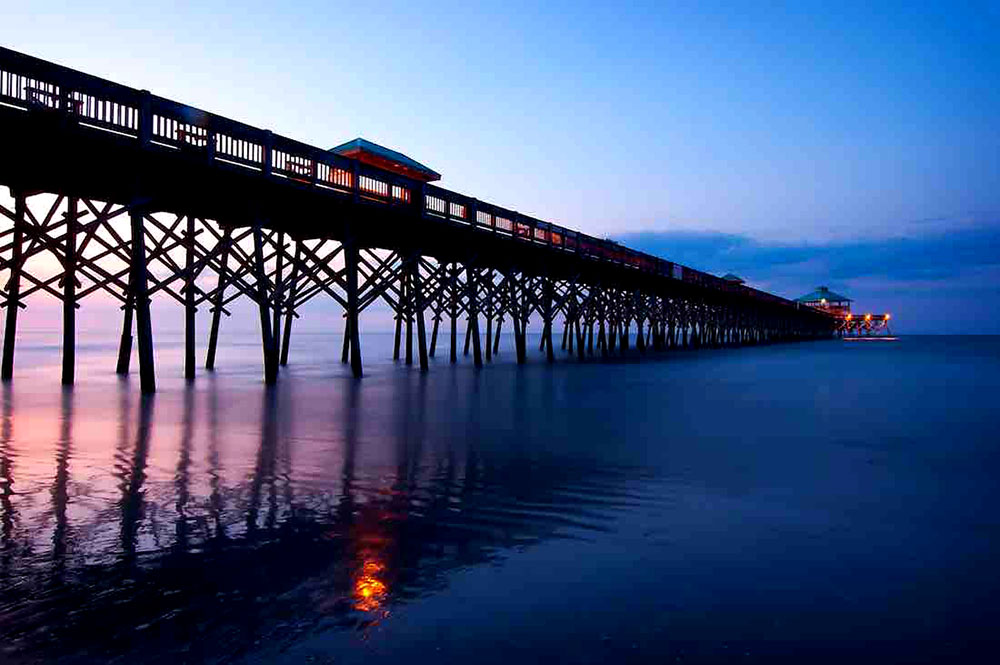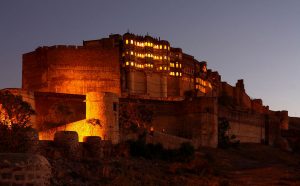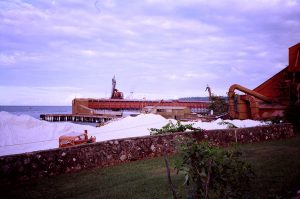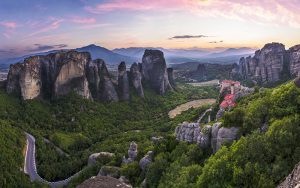Consistently rated as one of the top resorts in the world, Sea Island provides luxurious guest experiences at The Cloister, The Lodge, and The Cottages
Sea Island’s delightfully varied settings include oceanfront, riverfront, and golf perspectives to suit every taste.
Nestled along the sands of the Atlantic Ocean, Sea Island Resort is surrounded by cool breezes, swaying trees, and nature at its finest. This serene retreat offers an unforgettable Coastal GA resort vacation for guests and their families. And the convenient location attracts guests from around the world. Pack your bags and discover what makes this award-winning property preferred over neighboring Southern GA hotels and resorts. With an equidistant location between Jacksonville and Savannah international airports, Sea Island offers a truly stunning setting.
With 198 miles exposed to the Atlantic Ocean and more than 500,000 acres of coastal marshes, South Carolina is a liquid paradise with deep ties to the sea. Sixteen barrier islands guard the Carolina shore like sentinels of old, protecting the mainland from hurricanes and sever storms.
Before the Civil War, many of the Carolina sea islands featured enormous rice and cotton plantations, leading too much of the islands’ antebellum wealth. Sea Island cotton, in particular, commanded extremely high prices on the market and was widely recognized as the finest American cotton.
A Sea Island Guide:
Daufuskie Island, South Carolina
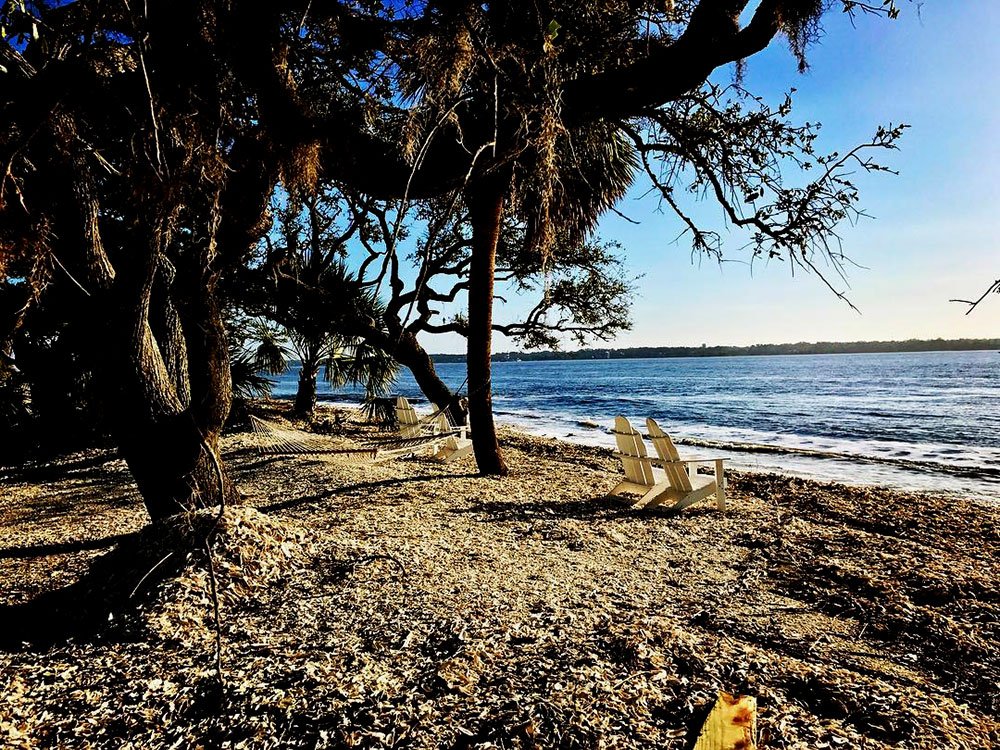
Daufuskie offers a glimpse of what other sea islands were like before bridges and causeways opened them to development. Most native residents of Daufuskie Island are descendants of freed slaves, who have made their living oystering and fishing for decades. The subject of Pat Conroy’s, The Water Is Wide, Daufuskie Island has a timeless quality and is still accessible only by boat. Daufuskie has, nevertheless, begun to be developed as parts of the island have been transformed into exclusive gated communities.
Edisto Island, South Carolina
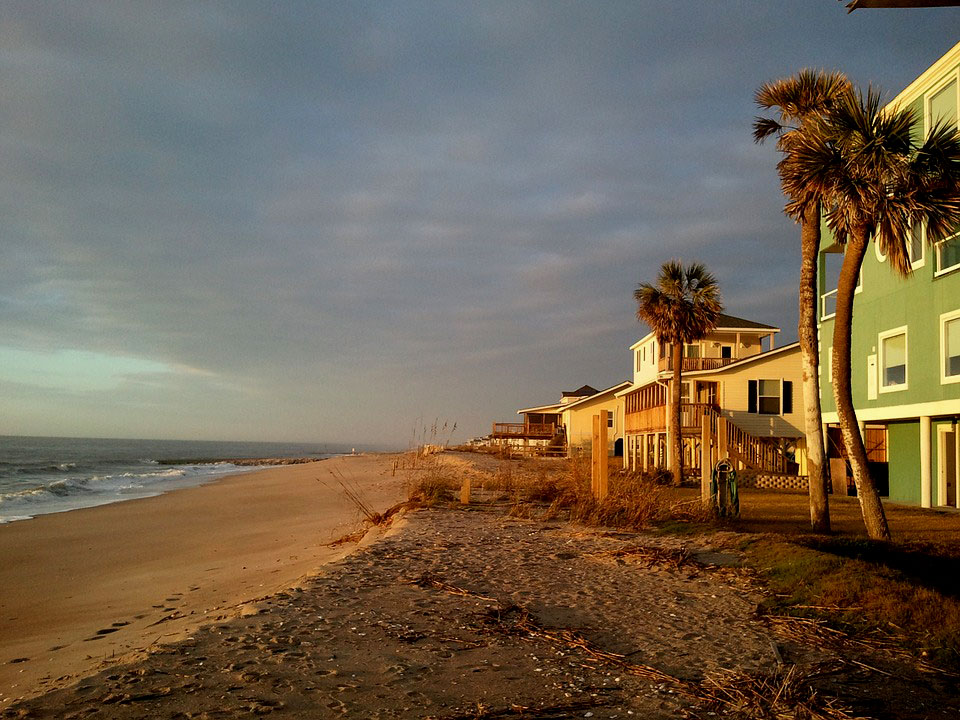
Located 50 miles southeast of Charleston on SC 174, Edisto Island is a historic beachfront community that features stately old plantation homes, beach houses atop stilts and ancient oak forests. Named for the agrarian Edisto Indian tribe who once lived on the Island, the first permanent settlers grew indigo during the colonial era and then Sea Island cotton after the American Revolution. During the Civil War, many of the Island’s mansions were vandalized by Union soldiers. Edisto Beach State Park offers two miles of sandy beaches that are considered to be one of the best sites for swimming and shell collecting in the state.
Hilton Head Island, South Carolina
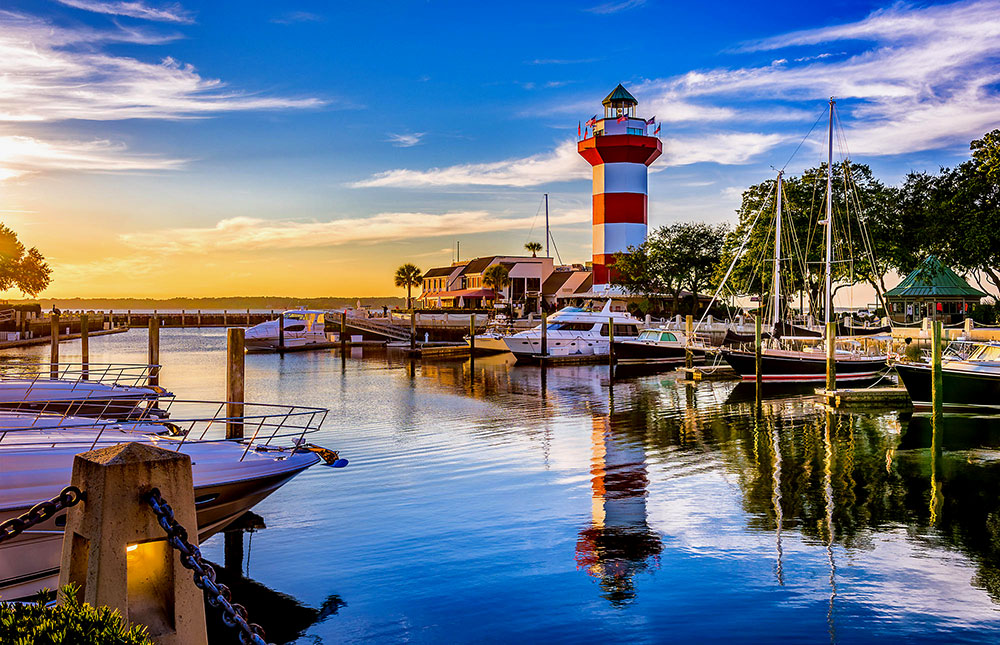
This boot-shaped Island is the second largest sea island between New York and Florida and is widely considered to be one of the finest resort communities in the U.S. Perhaps the best know of all the sea islands, Hilton Head Island has nearly 35,000 permanent residents and hosts millions of visitors each year. With 12 miles of white sand beaches and unlimited golf and tennis, Hilton Head Island is a vacation heaven with a rich history. Indians hunted and fished on the Island more than 10,000 years ago and two shell mounds still remain today. Named for the English sea captain Sir William Hilton, Hilton Head Island featured successful indigo, rice and sugar plantations in the 1700’s and priced Sea Island cotton before the Civil War. The Island served as a Union base to blockade Southern ports during the Civil War. After the Civil War, the Island was populated primarily by freed slaves who farmed, fished and hunted on the land. A bridge to the mainland was built in 1956, the same year that developer Charles Fraser purchased 19,000 acres on the Island. Through his development of Sea Pines, which intentionally preserved much of the natural beauty of the Island, Hilton Head Island began to gain an international reputation as a resort mecca
Hunting Island, South Carolina
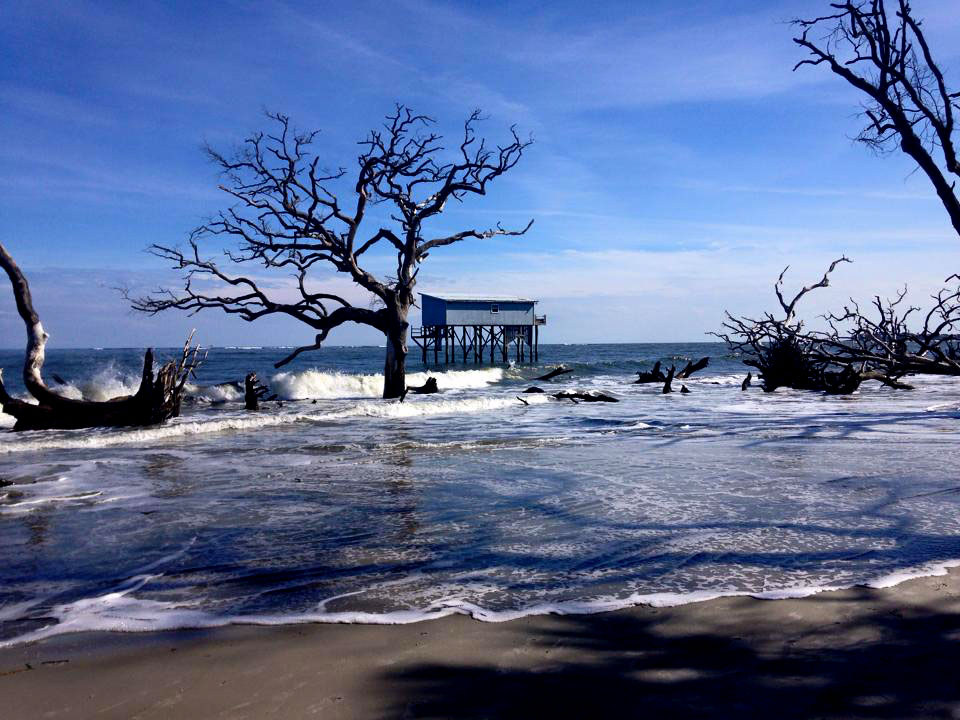
The 5,000 acre Hunting Island State Park remains the Island’s primary attraction. Located 16 miles southeast of Beaufort on US 21, the Island was once used almost exclusively for hunting, first by Indians and later by early colonists. The 136-foot Hunting Island lighthouse offers spectacular views of the park and the surrounding areas. Although the Island has suffered from extensive erosion, it remains one of the most beautiful and most popular state parks in the nation, with winding paths arching through thick palm, oak and palmetto forests.
Hunting Island is South Carolina’s single most popular state park, attracting more than a million human visitors a year.
Also attracted to the semi-tropical barrier island is an array of wildlife, ranging from loggerhead sea turtles to painted buntings, barracudas to sea horses, alligators, pelicans, dolphins and deer, raccoons, Eastern diamondback rattlesnakes and even the rare coral snake.
What they all enjoy is five miles of beach, thousands of acres of marsh, tidal creeks and maritime forest, a saltwater lagoon and ocean inlet. Amenities include a fishing pier and some of the state’s most desirable campsites.
Adding to the natural history of the big park is a piece of man-made history: South Carolina’s only publicly accessible historic lighthouse. Dating from the 1870s, the Hunting Island Lighthouse shoots 170 feet into the air, giving those who scale its heights a breathtaking view of the sweeping Lowcountry marshland and the Atlantic Ocean.
St. Helena Island, South Carolina
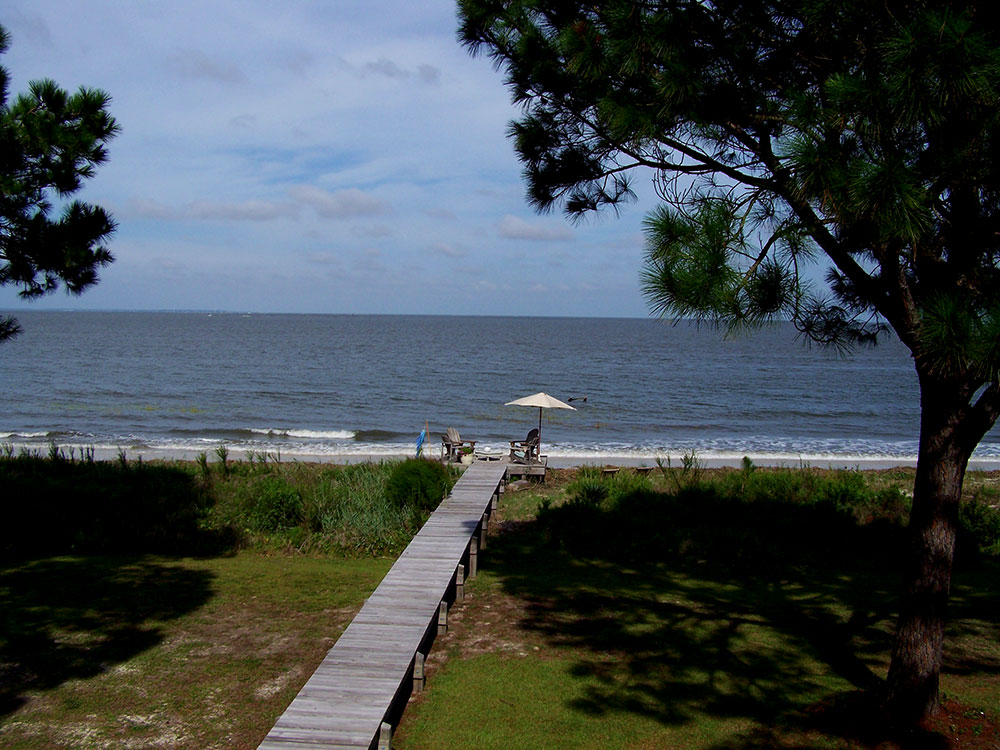
This sea island is perhaps best know for Penn Center the first school for freed slaves in the South, which now serves as an educational center and museum. Gullah culture still thrives on the Island, as several hundred descendants of freed slaves still make their home on St. Helena Island.
Cumberland Island, Georgia
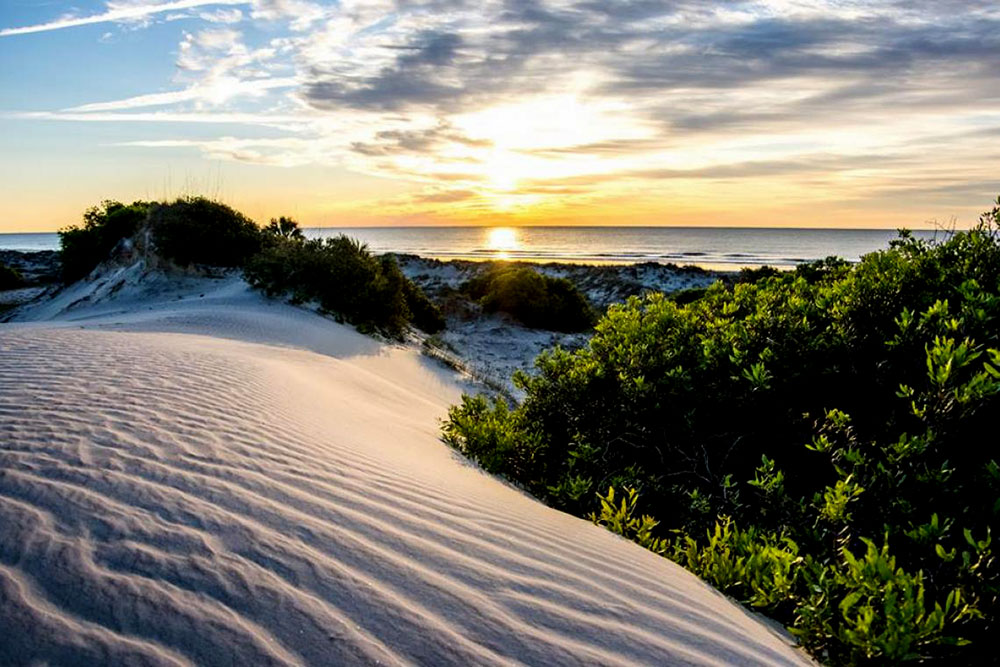
Georgia’s southernmost coastal island is 16 miles long and extends almost to the Florida border. Accessible by ferry from St. Marys, the Cumberland Island National Seashore features one of the nation’s most unspoiled beaches. Salt marshes, 20 miles of beaches and a variety of wildlife – including wild horses, alligators, sea turtles and even donkeys originally imported fro Sicily – can be glimpsed at this national park. The ruins of the Dungeness Mansion, once owned by the Carnegie family, remain a popular stop on the Island.
Jekyll Island, Georgia
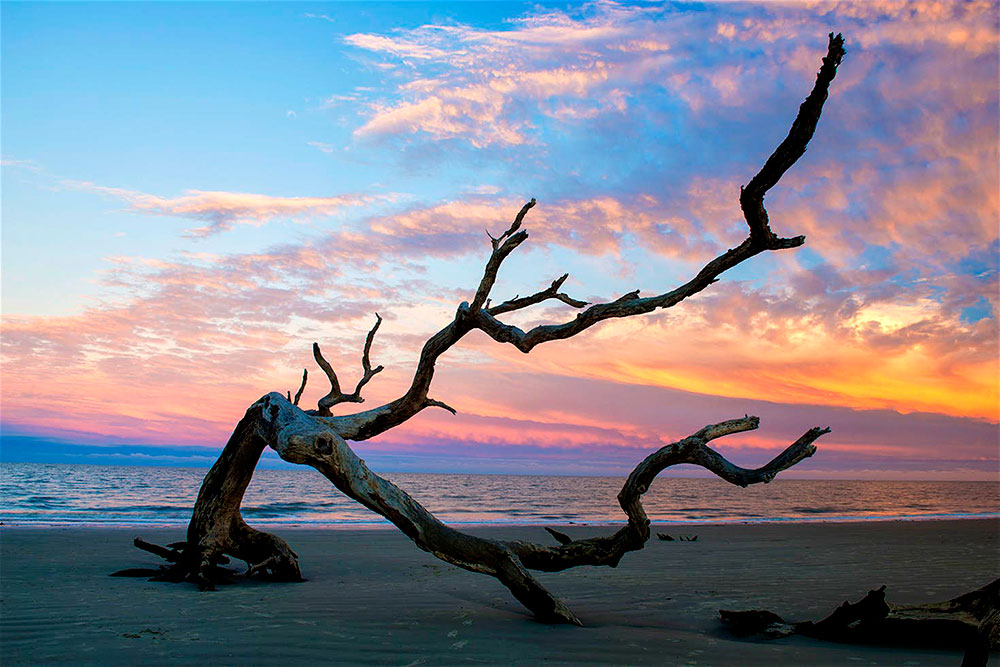
Situated just south of St. Simons Island, Jekyll Island was once an aristocratic winter playground, hosting such families as the Morgans, Pulitzers, Vanderbilts and Rockefellers, all of whom were members of the famed Jekyll Island Club. An estimated one-sixth of the world’s wealth was controlled from the Island during the millionaires’ reign, leading to concern during World War II that too much wealth was concentrated in one place. The “Millionaires’ Village” has been restored to offer a glimpse of the opulent lifestyle that once characterized the Island and is open for daily tours.
Ossabaw Island, Georgia
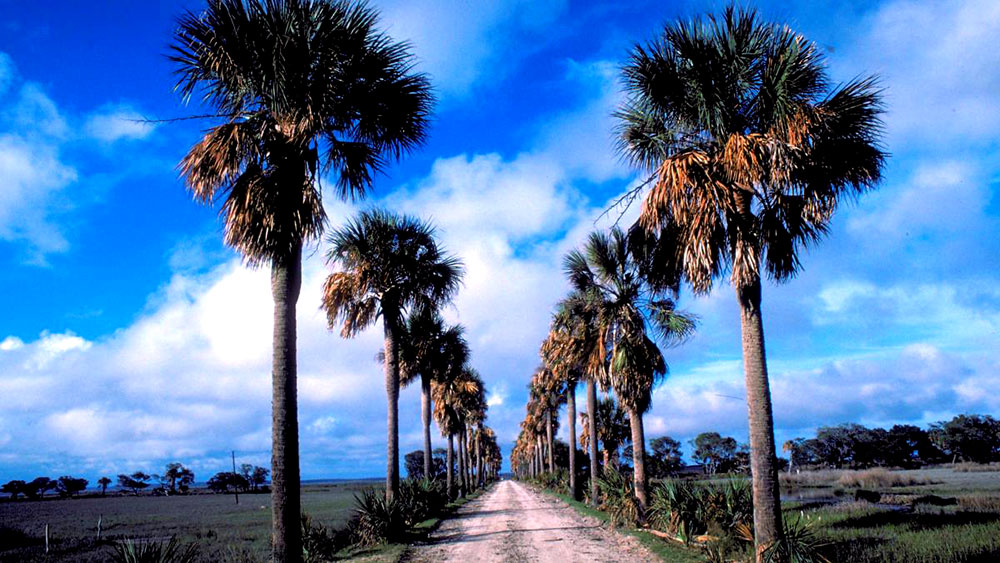
At 43 square miles, Ossabaw Island is one of the largest barrier Islands and is accessible only by water. Ancient Indian shell mounds offer evidence that the Island was once a favorite Indian hunting and fishing ground. Early Georgia colonists planted indigo on the Island and, some years later, cotton. Loggerhead sea turtles nest on the Island’s moonlight beaches each summer. Part of the Island is a wildlife refuge, devoted to the sea turtles, and is closed to the public.
Sapelo Island, Georgia
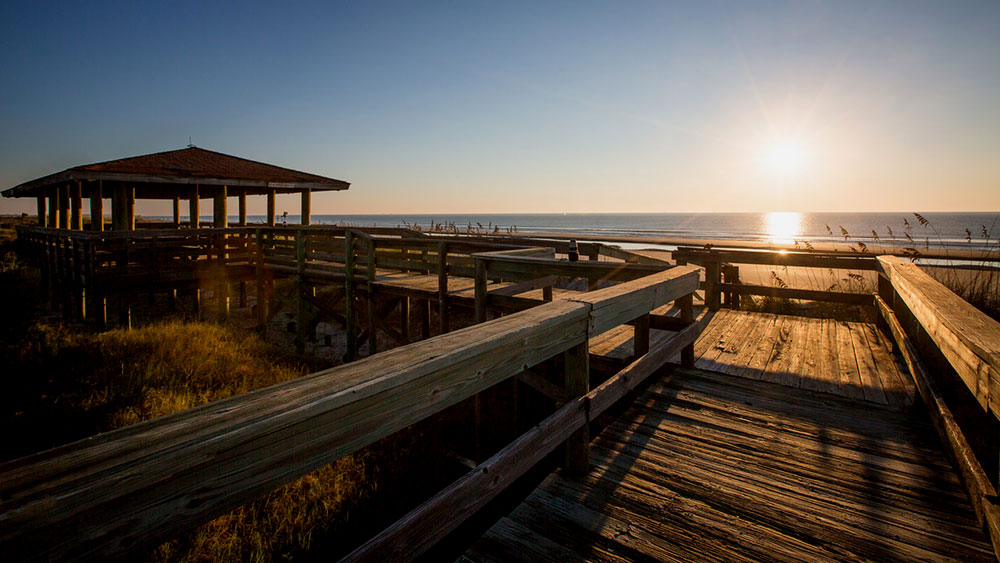
Just off the coast from Meridian, GA, Sapelo Island has been home to the Gullah, sea island descendants of freed slaves, for generations and hosts some of the most intact Gullah communities in the Lowcountry. The Island also has an elegant French provincial home that was once part of the estate of tobacco millionaire R.J. Reynolds and now serves as a marsh and estuary research laboratory.
St. Simons Island, Georgia
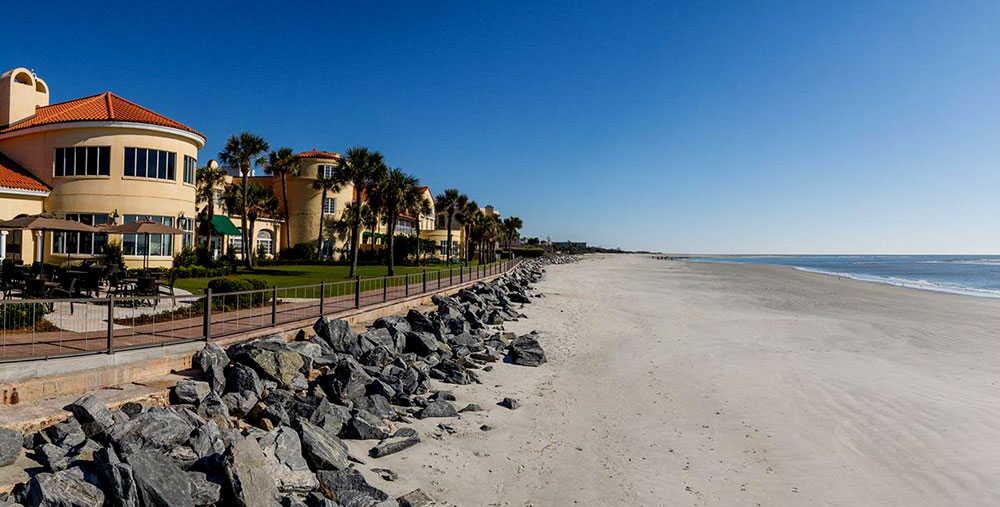
St. Simons Island is connected to the mainland by a causeway at Brunswick and is approximately the size of Manhattan. Once the site of Spanish missions and English fortifications, St. Simons hosted may Sea Island cotton plantations after the Revolution and became one of the most prosperous of the sea islands. Built in 1736 by General James Oglethorpe, the founder of Savannah, Fort Frederica is one of the largest British forts in North America. A number of resorts and hotels make the Island a popular vacation destination.
Tybee Island, Georgia
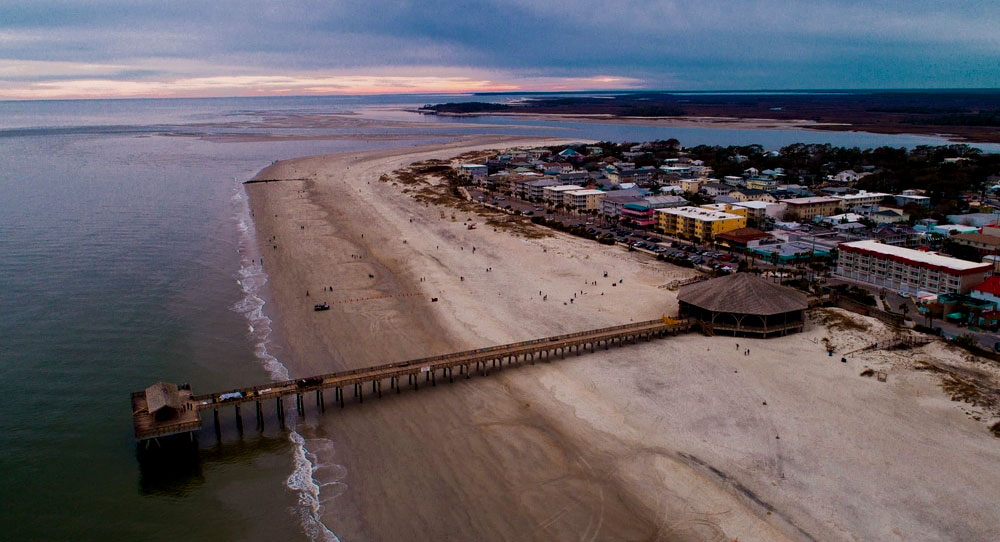
Located 18 miles east of Savannah, Tybee Island is one of Georgia’s oldest and most historic seaside communities. Connected to the mainland by US 80, the Island hosts thousands of sun-worshipping visitors annually. The Tybee Island Lighthouse – completed in 1736 by General James Oglethorpe, destroyed by a storm and rebuilt in 1773 – offers spectacular views of the Lowcountry.
Hutchinson Island, South Carolina
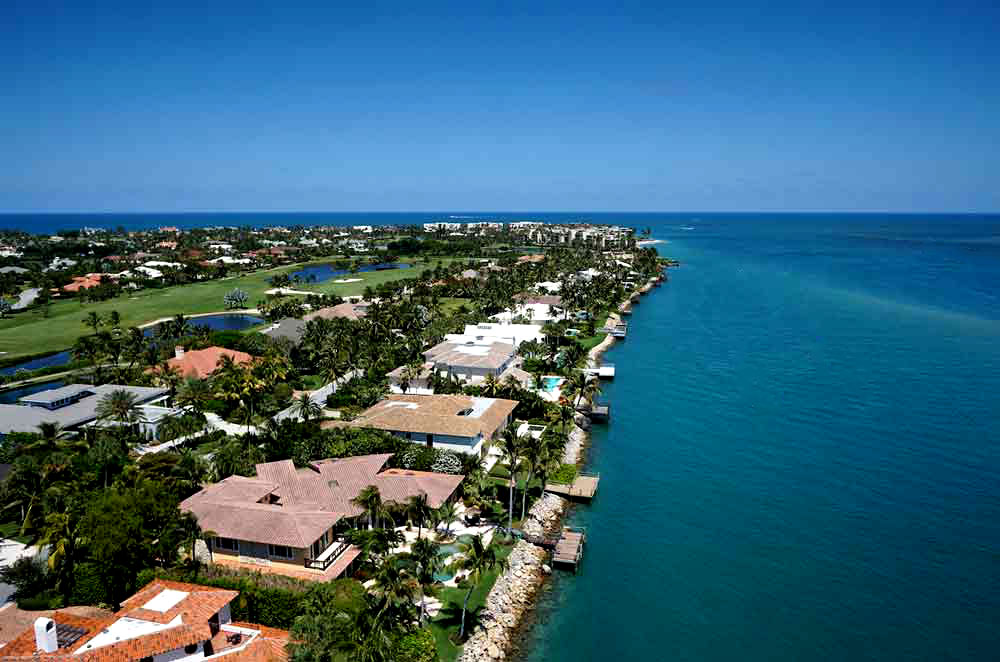
Once a popular site for dueling South Carolina gentlemen in the nineteenth century, this Island just across the Savannah River from Savannah’s River Street is home to The Westin Savannah Harbor Resort, the Savannah International Trade and Convention Center and a 27-hole golf course.
Kiawah Island, South Carolina
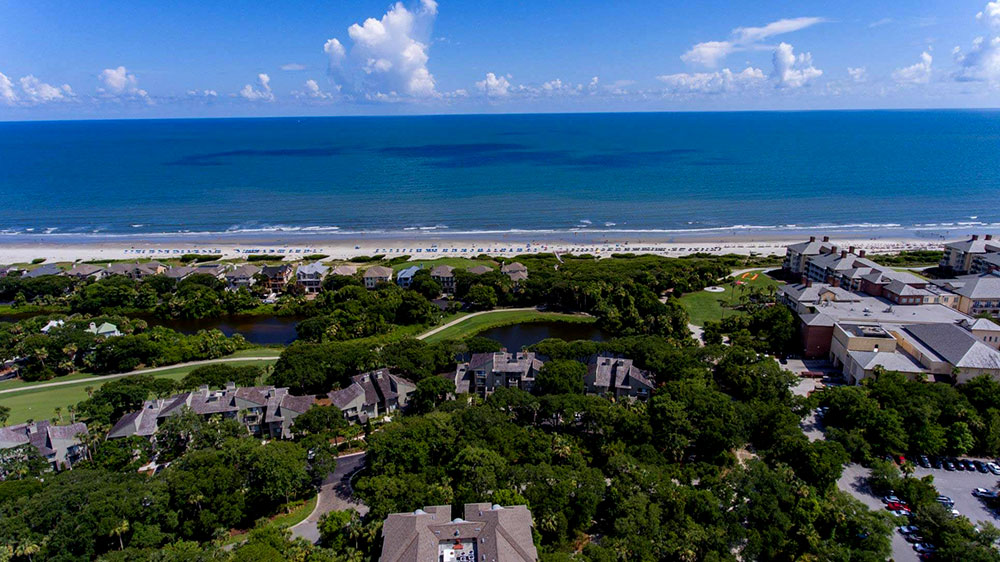
Located midway between Charleston and Beaufort, Kiawah Island’s 10,000 acres are named for the Indians who once hunted and fished on the Island. From 1772 to 1953, the Island was owned by Arnoldus Vanderhorst, South Carolina’s seventh governor, and his descendants. In the 1950’s, the Island was purchased and then resold to the Kuwait Investment Corporation in 1974. The oil-rich investors researched the Island and decided to take steps to protect wildlife and to set aside areas from development. Today the Island features several gated communities and superb golf and tennis facilities, as well as over 150 native species including the brown pelican and the Atlantic loggerhead sea turtle.
Share this:
- Click to share on Facebook (Opens in new window)
- Click to share on Twitter (Opens in new window)
- Click to print (Opens in new window)
- Click to share on LinkedIn (Opens in new window)
- Click to share on Reddit (Opens in new window)
- Click to share on Tumblr (Opens in new window)
- Click to share on Pinterest (Opens in new window)
- Click to share on Pocket (Opens in new window)
- Click to share on Telegram (Opens in new window)
- Click to share on WhatsApp (Opens in new window)

